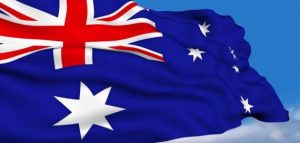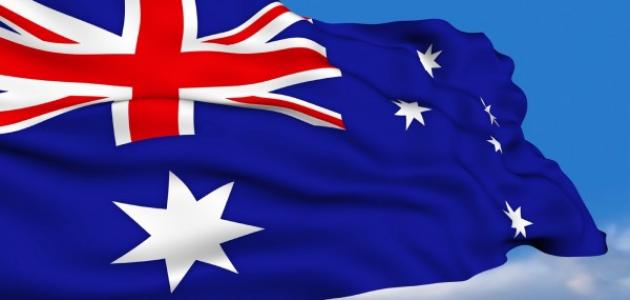Tourism in Australia 2021
Tourism in Australia 2021
Australia is one of the most important global tourism destinations. It is a country rich in beautiful landscapes that embrace contemporary architecture. Australia is famous for its many cities, which include a wide range of prominent tourist attractions.

Australia is a country and a continent at the same time surrounded by the Indian and Pacific Ocean. Australia is famous for its forests, wildlife and nature reserves. Canberra is the capital of Australia, but Sydney is the heart of Australia and an important tourist and economic destination for Australia, where water channels, lakes, parks and gardens are all over the city. Arab travelers come to Australia for the purpose of spending holidays and also for the purpose of joining educational institutes in Australia, learning the English language or completing university studies because it contains the best universities in the world.
Australia is located in the Southern Hemisphere, bordered to the north by the Timor Sea, the Sea of Arvora and the Strait of Tours, to the east by the Coral Sea and Tasman Sea, to the south by the Bass Corridor and the Indian Ocean, and to the west by the Indian Ocean.
Climate in Australia
There are big differences in temperature all over Australia, in the north we find the temperatures are very high, and there are other areas that are colder, and it does not snow in any of the Australian cities but it does fall in the Australian Alps.
Climate conditions in Australia vary due to the vast extent of the country. We find that rain falls throughout the year on the eastern coast due to the wind blowing from the ocean and colliding with the mountains of eastern Australia. In summer, rain falls in the center of the continent, and is almost non-existent in the western half of it.
About a third of Australia’s area is tropical and the rest is in the temperate zone. The coldest areas are in the southeast corner of the main part of the country and in Tasmania. The following table shows the months and climatic seasons in Australia:
Summer December to February, Autumn March to May, Winter June to August, Spring September – November.
Experts advise you not to spend a lot of time in the sun while you are in Australia, the sun there is really strong, and for some environmental reason, it has a much stronger effect on the skin than any other country, even southeast Queensland has the highest rate of skin cancer in the world, and I know that it is only 30 minutes In the Australian sun is enough enough to burn your skin.
Before traveling to Australia
Before traveling to Australia, you must obtain an electronic visa by visiting the official website
This applies to many Arab countries, including the Arab Gulf states, and a visa to travel to Australia allows you, dear Arab tourist, to stay for a maximum period of 3 months in Australia.
transportation in australia
Due to the vastness of Australia, the best way to travel between cities is by plane, and if the city you want to visit is nearby, you can use buses or trains.
Best times to travel to Australia
The best time to travel to Australia depends precisely on which part of the country you are traveling to, and you must remember that Australia is in the southern hemisphere, so the seasons are opposite to those in the northern hemisphere.
Do know that the southern part of the country, such as Sydney and Melbourne, is usually more popular during the summer months from December and January to February, so it will be more crowded and more expensive. Then you can go in October and November, March or April to avoid the crowds and save money, and don’t worry the temperatures in those months will still be nice.
If you are planning a trip to the northern region of Queensland, you can go in the winter months of June, July or August. Winter is also a good time to visit hot desert regions, such as Uluru.
Residence in Australia
Due to the high prices of accommodation in hotels in Australia, you can stay in hostels, and contrary to popular belief, hostels are not only for young people, but are considered comfortable places with rooms and private bathrooms, and if you do not mind, they can be a cheap alternative that saves you more money.
And if you’re traveling with family, or with friends, there are plenty of affordable accommodation options across Australia with accommodations ranging from rooms in locals’ homes, to beautiful homes suitable for groups that you can access via Airbnb. Accommodation costs differ from one state to another and from one city to another, and also vary according to the type of accommodation.
The language in Australia
Australia does not have an official language, but Australian English is the national and popular language in the country. Australian English is similar to English in grammar and spelling, with some notable exceptions.
Accommodation costs in Australia
Youth hostels (hospitality):
Hostels start at A$20 for a bedroom per night, although they go as high as A$40 in the larger coastal cities.
Private rooms with a double bed and a shared bathroom in the hostel range from AUD 80-100 per night.
Medium-cost hotels:
It will cost you at least about AUD 75-95 for the following: a double room, private bathroom, TV, and breakfast.
The cost of multi-chain international hotels is close to 200 Australian dollars.
Camping costs:
Camping per night costs A$15-30 (possible to bring your own tent, or increase if you are booking a parking spot).
food in australia
Food is a bit expensive in Australia!
Most good cafes or restaurants will cost at least A$20.
And if you want to cook a c
If you have your own food, the expected cost will be around AUD 100 per week.
Grocery value that will include: (pasta, vegetables, chicken, and other basic food items).
The cost of fast food (takeaway)
Fast food is one of the cheapest in Australia, costing around A$8-10 for sandwiches.
And about AUD 15 for a meal (burger, fries, soda).
There you will find the best restaurants that serve Asian and Indian food
Where you can get a great meal and nutritional value for less than 10 AUD!
Transportation costs
Local trains and buses into the city cost A$3-4 but the Greyhound bus is the easiest way to take you on a tour around the country as ticket fees start at A$145 and go all the way to A$3,000.
There are also backpacker buses like the Oz Experience that start at A$535 (although not recommended by previous tourist reviews).
As for the least expensive and most popular way is to drive your trip yourself, renting a caravan (camping vehicle) starts at AUD 60 per day.
Flying is very expensive due to limited competition, especially when going from coast to coast.
perfect .
Brief facts
Official name: Commonwealth of Australia.
Area: 7,692,024 km²
Population: more than 24 million people.
National language: English.
Capital: Canberra.
System of government: a constitutional monarchy.
International Dial Code: +61
Currency: Australian dollar.
Working days and hours: from Monday to Friday, and official working hours start from 9 am to 5 pm.
Emergency numbers: – (000) The main emergency number for the fire, police and ambulance, which can be reached from any landline or mobile phone in Australia.
– (112) The secondary emergency number can be contacted from mobile phones only.
– (106) The emergency number for calling via phone text messages for people who are deaf or have a hearing or speech impairment. This service works via a telegraph machine (TTY) or via a computer connected to a modem.
General information about Australia
Sydney is the largest city in Australia.
Australia is the largest country in terms of area and population.
Its longest river is the Murray River, which has a length of 2,575 km.
The highest mountain peak is Wilhelm Peak, which is located in Papua New Guinea, and is 4,964 meters above sea level.
Its climate is often characterized by extreme heat with little rainfall, high evaporation rates, and variations in temperature between night and day.
The first European discoverer of it is the Dutch sailor Film Janson, in the year 1606 AD when he saw the head of Cape York Peninsula, which is located in the far north of Australia from the eastern side, and in the year 1788 AD the British arrived from the southeastern side of it, and in the nineteenth century By birth, the continent contains some British settlements.
Among the most important Australian mineral wealth: lead, iron, petroleum, gold, zinc, coal, silver, nickel, zinc, and copper.
Among the most important Australian agricultural products: coconuts, cocoa, rubber, coffee, timber, apples, wheat, grapes, sugar cane, and bananas.
